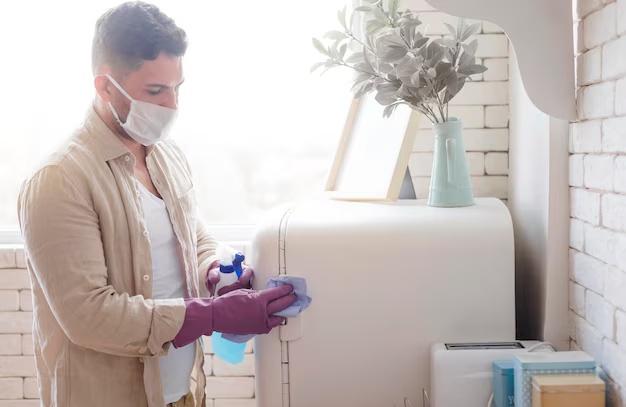How to Move a Refrigerator Without Scratching the Floor: Your Step-by-Step Guide
Moving a refrigerator might not seem like rocket science, but it can quickly become a daunting task if you’re trying to preserve your floors. Whether you’re relocating to a new home, remodeling your kitchen, or simply repositioning for a fresh look, ensuring your floors remain scratch-free is crucial. In this guide, we'll cover practical, effective strategies for moving a refrigerator without leaving unsightly marks on your floors.
Understanding the Challenge
Why Floors Get Scratched
Refrigerators are heavy and often have sharp edges or protrusions at their base. The sheer weight coupled with inadequate movement techniques can lead to scratches, especially on soft flooring materials like hardwood, vinyl, and laminate.
Common Reasons for Floor Damage:
- Dragging instead of lifting or rolling the appliance.
- Unprotected bases, where the refrigerator feet directly contact the floor.
- Improper Equipment such as using blunt tools or wheels that are not floor-friendly.
Types of Floors and Their Vulnerability
Different flooring materials respond differently to weight and movement. Understanding these responses is the first step in prevention.
- Hardwood: Prone to dents and scratches, especially with heavy weights and sharp edges.
- Tile: Can crack under substantial localized weight or pressure.
- Vinyl and Laminate: Easily scratched due to softer surface layers.
Preparation: Before You Move
Tools and Materials Needed
To move your refrigerator safely, you’ll need a few key items. Here’s a checklist to keep handy:
- Furniture Sliders: Essential for ease of movement and minimizing friction.
- Appliance Dolly: Provides stability and even weight distribution.
- Protective Blankets: To cover and secure delicate aspects of your refrigerator.
- Tape: Ideal for securing doors and loose parts.
Prepping Your Refrigerator
Before attempting to move your refrigerator, take these preparatory steps:
- Empty the Contents: Remove all items from within to reduce weight and prevent damage.
- Defrost: If you have a freezer, ensure it’s defrosted to avoid water leakage.
- Unplug and Secure Cables: Ensure all cables and hoses are detached or secured to prevent tripping or tangling.
Moving the Refrigerator: Step-by-Step
Step 1: Clear the Path
Before moving, clear the path from obstructions and determine the best route. Consider low ceiling heights, narrow doorways, and corners as potential challenges.
Step 2: Protect the Floor
Place durable furniture sliders or moving blankets under each corner of the refrigerator. This reduces friction and acts as a buffer between the floor and appliance.
Step 3: Secure and Stabilize the Appliance
Use tape to seal the refrigerator doors tightly. This prevents them from swinging open during the move. For additional safety, wrap the refrigerator with a moving blanket and secure it with straps.
Step 4: Utilize an Appliance Dolly
This tool helps distribute weight evenly and offers handles for easier maneuvering. Tilt the refrigerator slightly and slide the dolly underneath. Once secure, slowly tip the appliance back onto the dolly’s wheels for movement.
Step 5: Slow and Steady Movement
With the refrigerator on the dolly, move cautiously, and always have a spotter for added safety. Slow and careful movement through doors and passageways is key to preventing damage.
Step 6: Set the Refrigerator Down
Upon reaching the new location, reverse the loading process carefully. Slide off the dolly, ensuring it’s stable and once again utilize furniture sliders to position precisely.
Tips for a Smooth Transition
Professional Moving Services vs. DIY
Deciding between doing it yourself and hiring professionals depends on several factors:
- Budget Considerations: DIY may save costs but involves risks and the need for proper equipment.
- Professional Expertise: Hiring pros can offer peace of mind with insurance and experience, especially in challenging moves.
Post-Move Inspection
After the refrigerator is in place, conduct a thorough inspection:
- Check Your Floors: Look for any signs of scratches, dents, or marks.
- Inspect the Refrigerator: Ensure no damage occurred to the appliance itself during the move.
Protecting Different Flooring Types
For Hardwood Floors
- Use felt pads under furniture sliders to minimize direct impact.
- Avoid Dragging even with protectors; if repositioning is needed, always lift when possible.
For Vinyl and Laminate
- Avoid sharp objects coming in contact with the floor. Check sliders for any abrasive debris before use.
- Clean thoroughly before moving to remove grit that can cause scratches.
Tile and Other Hard Surfaces
- Check for cracks or gaps in tiles before moving; reinforce any loose tiles with proper adhesive before beginning the move.
Summary of Key Steps 📝
- Prepare by gathering tools: sliders, dolly, and blankets.
- Pre-move preparations: empty and secure the refrigerator.
- Protect the floor: use sliders or blankets beneath appliance feet.
- Utilize an appliance dolly for movement.
- Move slowly with a spotter aiding navigation.
- Inspect flooring and appliance post-placement.
By following these detailed guidelines, you can move your refrigerator with confidence, maintaining both its integrity and that of your beautiful floors. This effort can save time, money, and stress, giving you the tranquility to enjoy your reorganized space.
